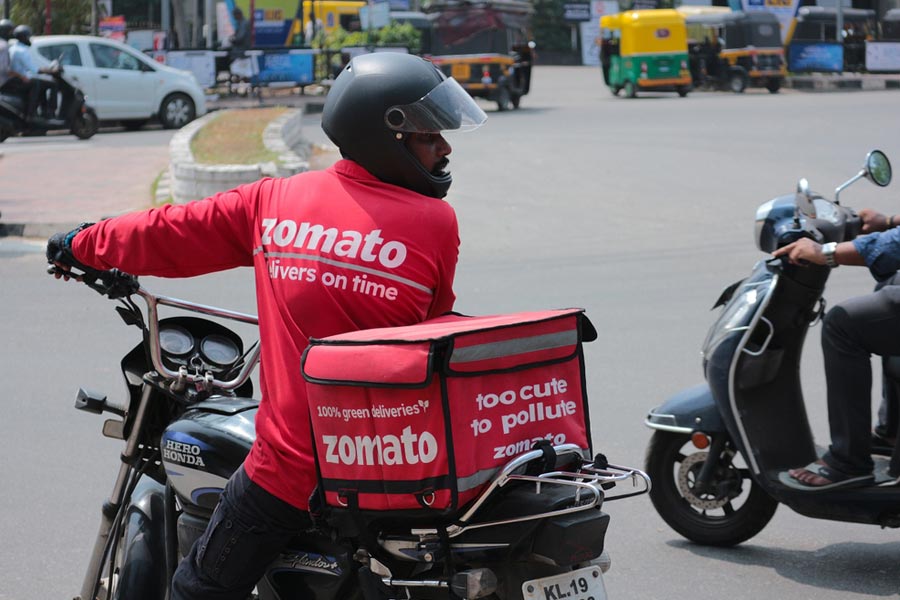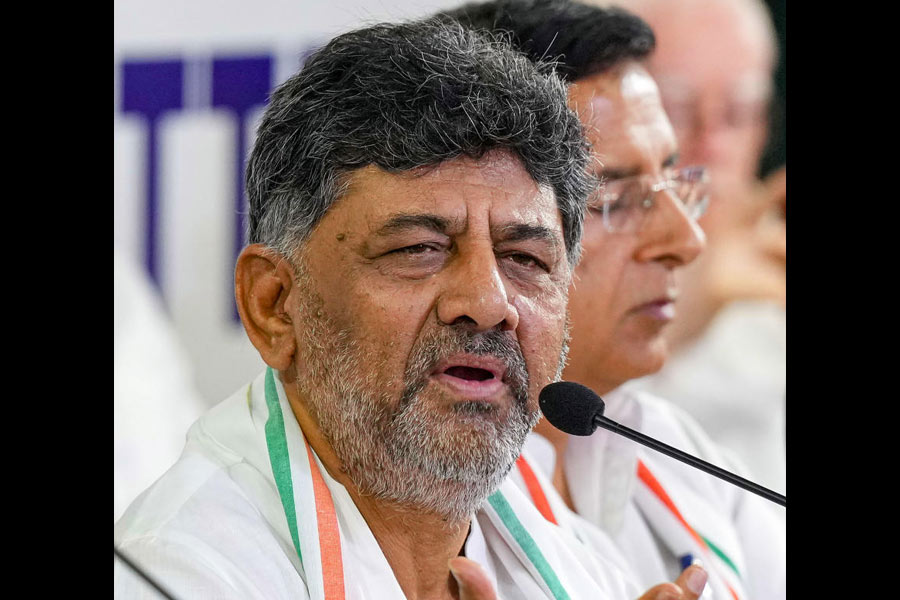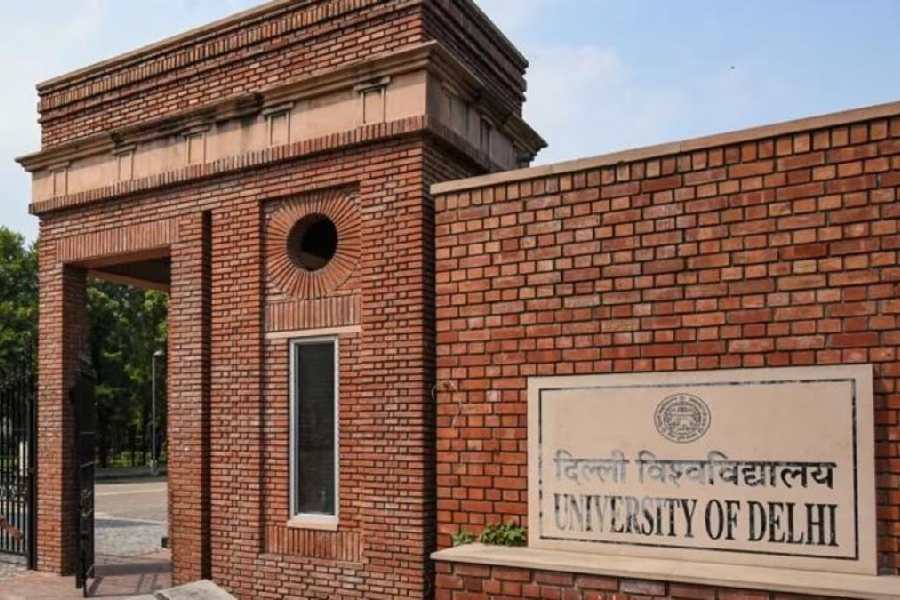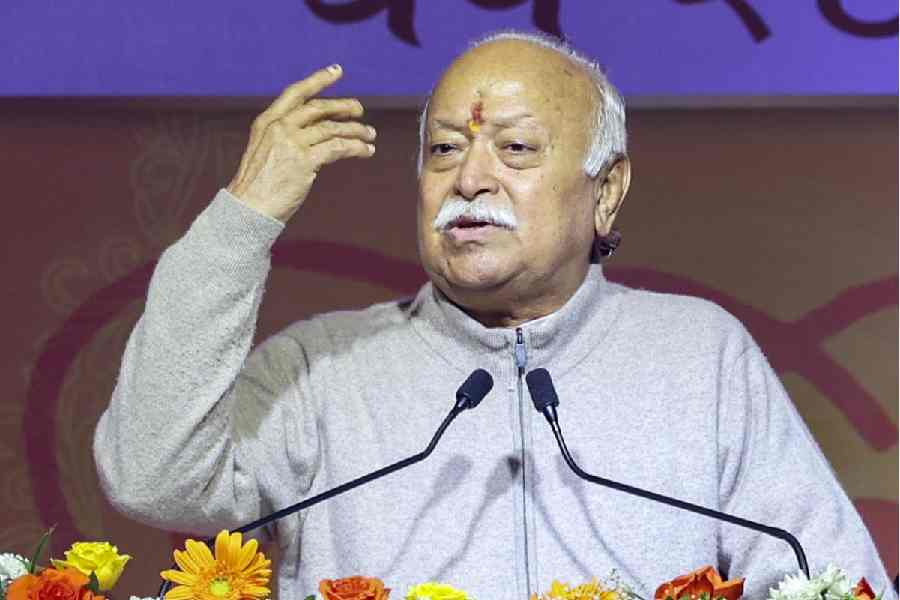A heap of chappals is mounted near a milestone on one corner of a bylane in Behala. The shoes represent the journey of lakhs of migrant workers during the course of the nationwide lockdown.
Around 30 metres away, a series of ploughs stand on the ground. Mics at the spot are playing audio clips from farmers’ protests at the borders of Delhi.
A just-concluded street art festival in a Behala neighbourhood was a collage of works that mirrored the “convulsive” times the country has been going through. The new citizenship thrust, the abrogation of the special status of Kashmir, the plight of migrant workers during the lockdown and the contentious farm laws provide context to many of the installations at the second edition of Behala Art Fest, organised by Nutan Sangha on Rai Bahadur Road, in association with The Telegraph.
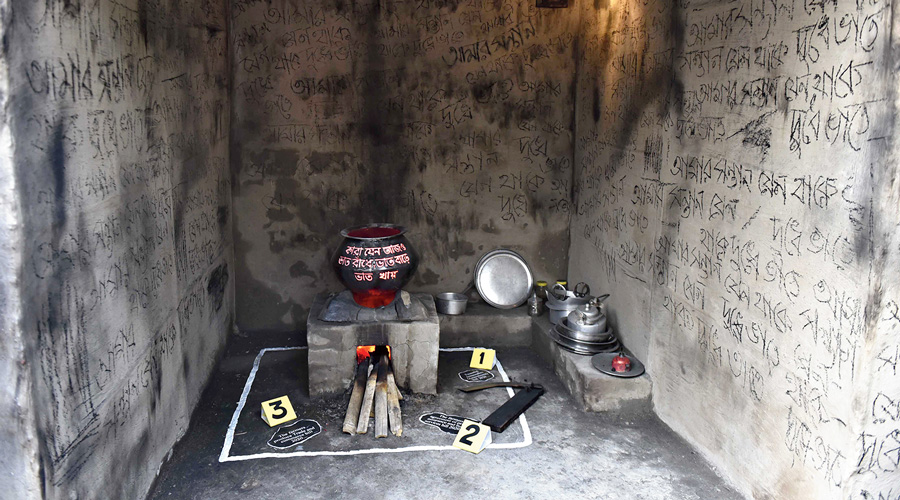
A village kitchen with poetry on the wall about a mother worrying about the scarcity of food for her children because of the Centre’s three new farm laws (marked on the floor). Sanat Kr Sinha
One of the installations shows a small slice of a street, barricaded with black and yellow police tapes. Slogans of resistance on the wall and a teapot, a pair of slippers and some newspapers that lay strewn on the ground inside.
The recall — a “mini” Shaheen Bagh or Park Circus vigil that had to be vacated because of the pandemic, but where protesters left some of their belongings as a symbol of the continuity of protest.
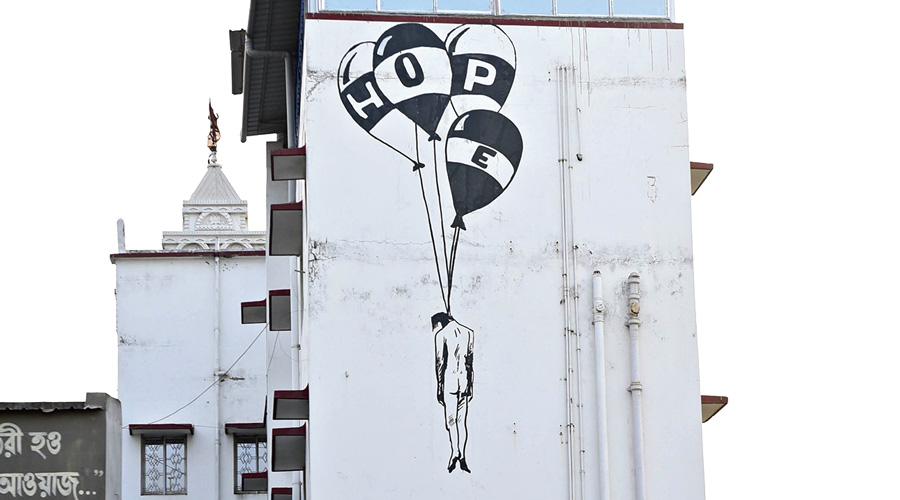
A facade shows a man hanging from balloons which read “HOPE”. Sanat Kr Sinha
A few steps ahead, a small village kitchen has been set up with a pot sitting on an earthen oven. The caption on the walls, derived from an 18th century Bengali poem, anticipates a grim future where a mother is worried about the scarcity of food for her children. The threat — three markers on the floor, naming the three new farm laws. A series of paintings, mostly charcoal-on-paper, depict “screaming figures seem to be appealing perpetually to an invisible owner”.
“Unfortunately, their demands fall on deaf ears,” says the accompanying note.
The festival, a stone’s throw from the ever-busy Diamond Harbour Road, was also a collage of several mediums; paintings, sculpture and photographs alongside videos and performances. Over 20 artistes have come together for the festival.

A wall painting shows migrant workers walking home during the lockdown. Sanat Kr Sinha
“India has been passing through a convulsive time for the past few years. The artistes cannot but respond to the urgencies around them. Contemporary art has to ask questions and build collective consciousness,” said Oindrilla Maity Surai, who has curated the festival.
One audio-visual installation has a screen showing maps with continuously changing boundaries. A flying bird, oblivious to the changing boundaries, adds to the contrast. The accompanying sound is that of marching soldiers.
The paintings of the facades of houses and walls are hard hitting. A wall depicts people walking with children, carrying their frugal belongings on their heads, depicting the long and arduous homeward journeys undertaken by lakhs of migrant workers during the lockdown.
One façade shows a man hanging from the strings of four giant balloons, which together read “HOPE”.
“The rulers of the country keep giving false hopes to its citizenry. From demonetisation to Rs 15 lakh in bank accounts to the promise of achhe din — the false hopes come one after another,” said Sanatan Dinda, the convener of the festival and the man behind the paintings.
The festival started on Friday and concluded on Sunday.





